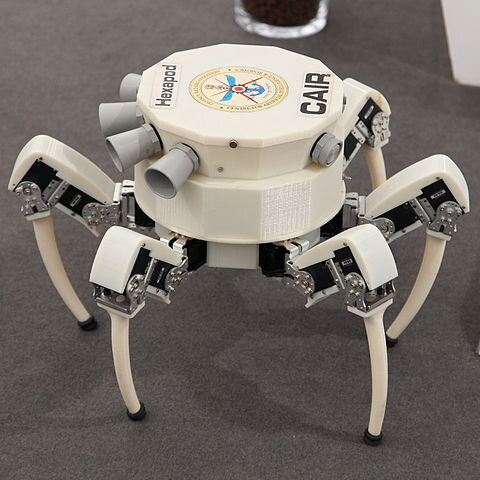Android Reproduction

A follow up to the ideas I presented in a piece on Synthetic Life. Even though I am writing this for Mutant Future, it can be applied to warforged and other living constructs.
Synthetic life and some basic androids have two advantages over biologicals, at least in Mutant Future. They can reproduce and control their evolution. Basic androids, those that are machines, have a difficult time of this because usually it is not part of their programming. They can construct robots like anyone else but uploading their minds and modifying the code is usually beyond them. Synthetics are different. They reproduce in a manner similar to biologicals. There is some form of development in a womb, egg or seed and may even go through some form of metamorphosis after birth/germination. They may be born as young or adults. The mind of the offspring is based on their own and some synthetics have found ways of hacking this, allowing them to construct their offsprings' minds. There may be one parent or more than one, each adding to the technology and programming of the resulting synthetic organism. But that is just the tip of the iceberg.
Synthetics that have access to advanced technology, either a facility or some sort of implant, can modify their young in ways beyond their own genetics and programming. Far beyond. A humanoid synthetic could have children that are meant to be starships, factories, self modifying artworks or massive war machines. With enough time and resources, synthetics can adapt their species to almost any situation.
The reason they haven't taken over the entire biosphere is resources. There simply not enough of the needed technology to allow them to modify themselves in this way. They can reproduce, usually, without too much effort. But built in limitations keep them from wiping out all other life. Because they can modify their software, these limitations are resource related. Each needs a small amount of several rare earth metals for their brains to function. Of course some androids are looking to echinoderms and jellyfish- creatures that live without needing brains. Some are even looking to plants, at least as a last ditch form of survival. Photosynthetic androids may spawn off new kinds of synthetic life if given the chance and some luck. [One of the ideas I have had for a few years is mountain tops covered with plant life. Now I think it would make more sense to use plant analog androids.]
But even as they look to the future with offspring, androids of all kinds still need to deal with the present. They are not a monolithic community and many groups compete for the needed metals for brain manufacturing. They are not indestructable and many are slain by monsters and other people. Some are even good food for certain kinds of plants and animals. Androids are in as much danger of extinction as any biological species or family.
Biological and synthetic life are two ecosystems that are just starting to compete on a grand scale. Biologicals have a much longer history, outnumber the synthetics by huge numbers and have many diverse forms. Synthetics can control their evolution but are stuck with many of the same restrictions as biologicals plus a need for metals that are hard to extract from the crust of the Earth. My guess would be that neither goes extinct and eventually forms an hybrid ecosystem where they treat each other as equals, at least some of the time.
As for living constructs in d20, they need some changes to allow them to control their own future. An ability to reproduce is the obvious one. Instead of one parent or even two, I would think that warforged need a dozen or more. Each chops off a bit of its spirit and places that in the new body (xp or maybe charisma damage that takes a long time to heal). The personalities of the parents mix in the resulting mind. Those warforged that try to reproduce with fewer parents result in death for the would be parents- the drain was too much for them. As for other living constructs, the limitations are what ever you want. There are many possibilities for fantasy and science fiction with synthetic life.
Those looking for other constructs that reproduce, there are the maug from the 3e Fiend Folio (something I think would benefit from the living construct type) and the iron willow I mention here: http://skirmisher.com/node/423 The maug does influence its own abilities as it is the only construct with grafts (from the same book).



